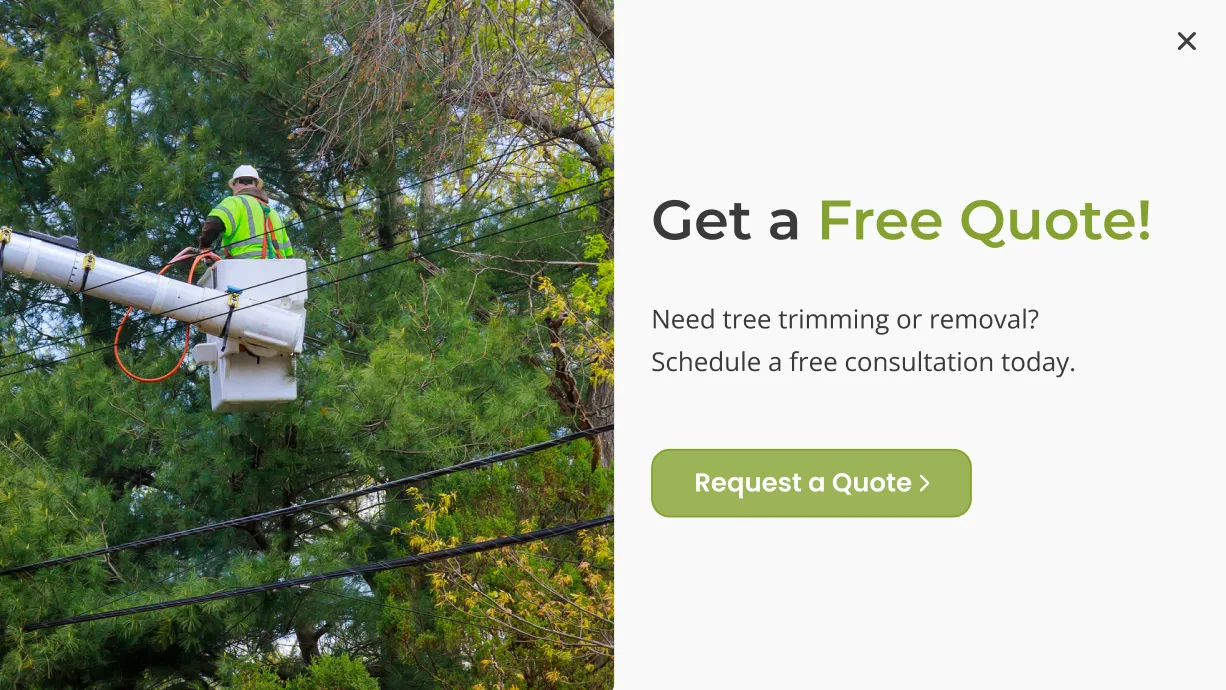How Much Can You Prune a Tree Without Killing It?
Pruning is a key part of tree maintenance, but excessive or improper pruning can be damaging. Here are some general guidelines:
- Never remove more than 25% of a tree’s foliage in a single season.
- Avoid cutting more than 30% of the main branches, as this can weaken the structure.
- Do not remove the tree’s crown, as this can lead to unbalanced growth and long-term damage.
- Prune during the dormant season (fall or winter) to reduce stress on the tree.
- Always use proper pruning techniques, such as making clean cuts near the branch collar to promote healing and reduce the risk of disease.
Factors That Affect Tree Pruning
Before pruning, consider these factors:
- Tree Species: Some trees, like oaks, are more vulnerable to excessive pruning.
- Age of the Tree: Younger trees recover faster from pruning than mature ones.
- Health and Location: A weak or diseased tree should not be over-pruned, especially in areas prone to high winds or environmental stress.
- Purpose of Pruning: Pruning for safety, aesthetics, or health requires different approaches and levels of aggressiveness.

How to Remove a Tree Without Damaging the Surroundings
In some cases, tree removal is necessary due to damage, disease, or safety concerns. To do it safely, follow these steps:
- Assess the Tree’s Condition: Check for disease, instability, or structural weaknesses that require immediate removal.
- Consult a Professional: Large trees or trees in tight spaces should be removed by certified arborists.
- Use the Right Equipment: If removing a tree yourself, use chainsaws, ropes, and protective gear.
- Manage the Stump and Roots: Leaving behind roots may lead to regrowth or potential landscape issues.
- Check Local Regulations: Some areas require permits for tree removal, so check with your local authorities.
How to Remove a Tree Stump
After a tree is removed, its stump and roots can cause problems. Here are the best methods for removal:
Manual Removal
- Dig out the stump using a shovel and cut large roots with a saw.
- Use a winch or lever to extract deeply rooted stumps.
- Consider filling the hole with nutrient-rich soil to aid new plant growth.
Chemical Removal
- Apply tree stump remover chemicals to accelerate decomposition.
- Ensure chemicals used do not negatively affect surrounding soil and plants.
- Use eco-friendly alternatives when possible to minimize environmental impact.
Mechanical Removal
- Use a stump grinder to grind down the remaining stump and roots.
- Ensure the surrounding area is clear of debris before using heavy machinery.
How to Remove Tree Roots from Different Areas
Tree roots can cause damage if not properly managed. Here are methods for different scenarios:
- Roots in the Lawn: Use gardening tools to trim small roots and refill the soil to prevent sinking.
- Roots in the Ground: Physical barriers like root guards can prevent further spread.
- Roots in Sewer Lines: Hydro jetting or root-killing chemicals can prevent blockages.
- Roots Under Sidewalks and Driveways: Heavy machinery may be required to extract large roots without damaging pavement.
- Roots Near Foundations: Specialized techniques such as root pruning and installing root barriers can help protect structures.
Tips for Safe and Effective Tree Pruning
- Use sharp, clean tools to ensure clean cuts that heal properly.
- Avoid pruning during spring and summer when trees are actively growing.
- Apply wound dressing on large cuts to prevent disease and infections.
- Make angled cuts to allow water to drain off and reduce rot.
- If uncertain, hire a professional arborist to avoid costly mistakes.

Common Questions About Tree and Root Removal
How Many Limbs Can You Prune Without Killing a Tree?
It’s generally safe to prune up to 25-30% of a tree’s limbs in a single season. Removing too many limbs at once can weaken the tree’s ability to photosynthesize and recover.
How Do You Remove a Tree Without Killing It?
Instead of complete removal, consider tree trimming or root pruning to manage its size while preserving its health.
What Happens If You Remove the Bark from a Tree?
Removing bark can expose the tree to disease and pests. If a significant portion is removed, the tree may not survive.
Can You Remove Tree Roots Without Killing the Tree?
Yes, but it requires precision. Avoid cutting too many structural roots, and always leave at least 50% of the root system intact.
Does Tree Removal Include Root Removal?
Not always. Some services remove the stump but leave the roots behind, which may cause future issues. Stump grinding or excavation is required to fully eliminate roots.
Can Removing Large Roots Kill a Tree?
Yes, removing major roots can destabilize a tree, affecting its ability to absorb nutrients and water. Always remove roots carefully and only when necessary.
How Do You Prevent Tree Roots from Growing Back?
Using root barriers, applying root inhibitors, or completely removing the stump and root system can help prevent regrowth.
Conclusion
Understanding how much of a tree you can remove without killing it is crucial for maintaining a healthy and safe landscape. Whether you need to prune, remove a tree entirely, or eliminate problematic roots, doing so correctly ensures a balanced environment. If in doubt, always consult with tree care professionals to avoid unnecessary damage.
By following these guidelines, you can keep your landscape in top shape while preserving the health and stability of your trees. Proper tree care not only enhances your property’s appearance but also contributes to a healthier ecosystem and long-term sustainability.

